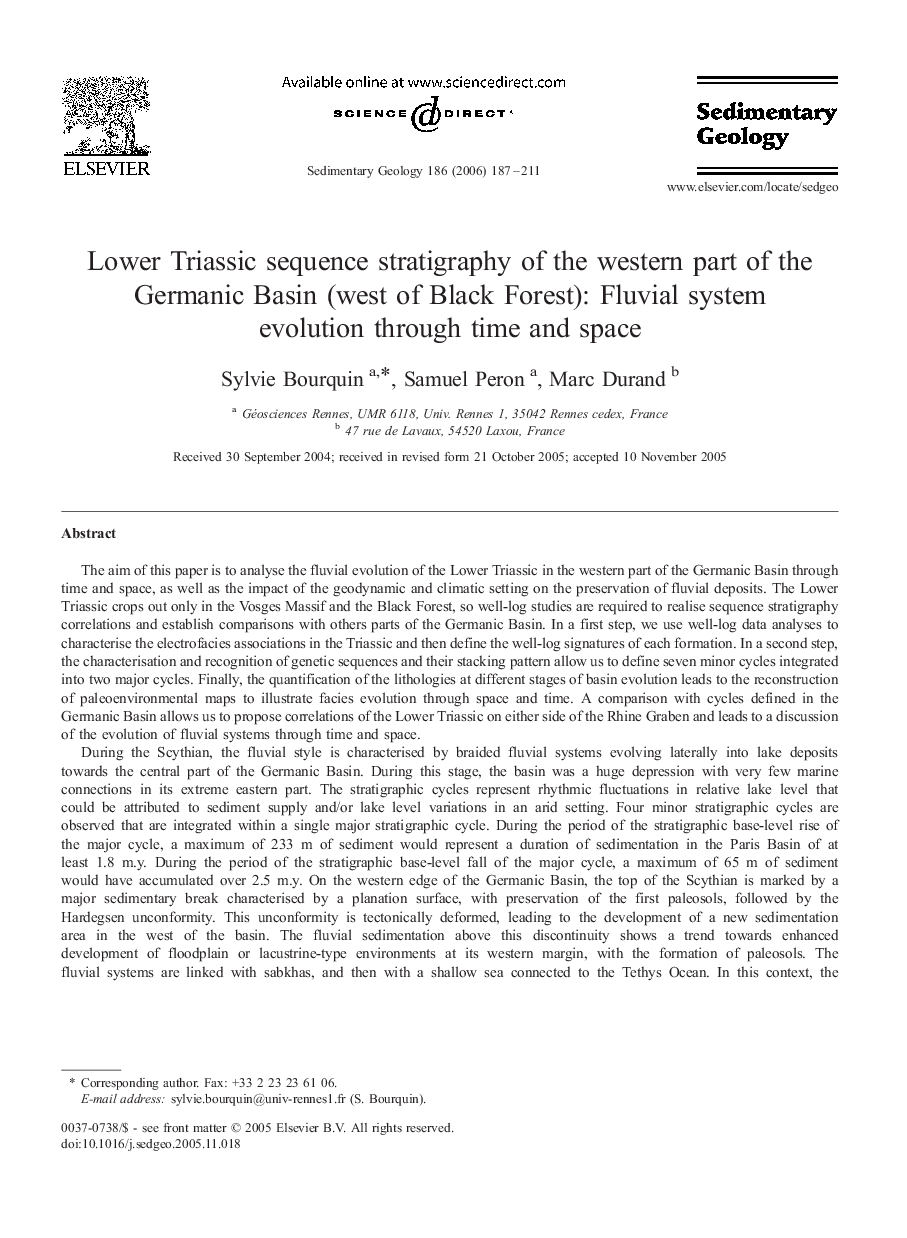| کد مقاله | کد نشریه | سال انتشار | مقاله انگلیسی | نسخه تمام متن |
|---|---|---|---|---|
| 4691124 | 1636187 | 2006 | 25 صفحه PDF | دانلود رایگان |

The aim of this paper is to analyse the fluvial evolution of the Lower Triassic in the western part of the Germanic Basin through time and space, as well as the impact of the geodynamic and climatic setting on the preservation of fluvial deposits. The Lower Triassic crops out only in the Vosges Massif and the Black Forest, so well-log studies are required to realise sequence stratigraphy correlations and establish comparisons with others parts of the Germanic Basin. In a first step, we use well-log data analyses to characterise the electrofacies associations in the Triassic and then define the well-log signatures of each formation. In a second step, the characterisation and recognition of genetic sequences and their stacking pattern allow us to define seven minor cycles integrated into two major cycles. Finally, the quantification of the lithologies at different stages of basin evolution leads to the reconstruction of paleoenvironmental maps to illustrate facies evolution through space and time. A comparison with cycles defined in the Germanic Basin allows us to propose correlations of the Lower Triassic on either side of the Rhine Graben and leads to a discussion of the evolution of fluvial systems through time and space.During the Scythian, the fluvial style is characterised by braided fluvial systems evolving laterally into lake deposits towards the central part of the Germanic Basin. During this stage, the basin was a huge depression with very few marine connections in its extreme eastern part. The stratigraphic cycles represent rhythmic fluctuations in relative lake level that could be attributed to sediment supply and/or lake level variations in an arid setting. Four minor stratigraphic cycles are observed that are integrated within a single major stratigraphic cycle. During the period of the stratigraphic base-level rise of the major cycle, a maximum of 233 m of sediment would represent a duration of sedimentation in the Paris Basin of at least 1.8 m.y. During the period of the stratigraphic base-level fall of the major cycle, a maximum of 65 m of sediment would have accumulated over 2.5 m.y. On the western edge of the Germanic Basin, the top of the Scythian is marked by a major sedimentary break characterised by a planation surface, with preservation of the first paleosols, followed by the Hardegsen unconformity. This unconformity is tectonically deformed, leading to the development of a new sedimentation area in the west of the basin. The fluvial sedimentation above this discontinuity shows a trend towards enhanced development of floodplain or lacustrine-type environments at its western margin, with the formation of paleosols. The fluvial systems are linked with sabkhas, and then with a shallow sea connected to the Tethys Ocean. In this context, the stratigraphic cycles are caused by variations in relative sea level and/or sediment supply. The fluvial deposits are preserved in an exoreic basin.
Journal: Sedimentary Geology - Volume 186, Issues 3–4, 1 May 2006, Pages 187–211